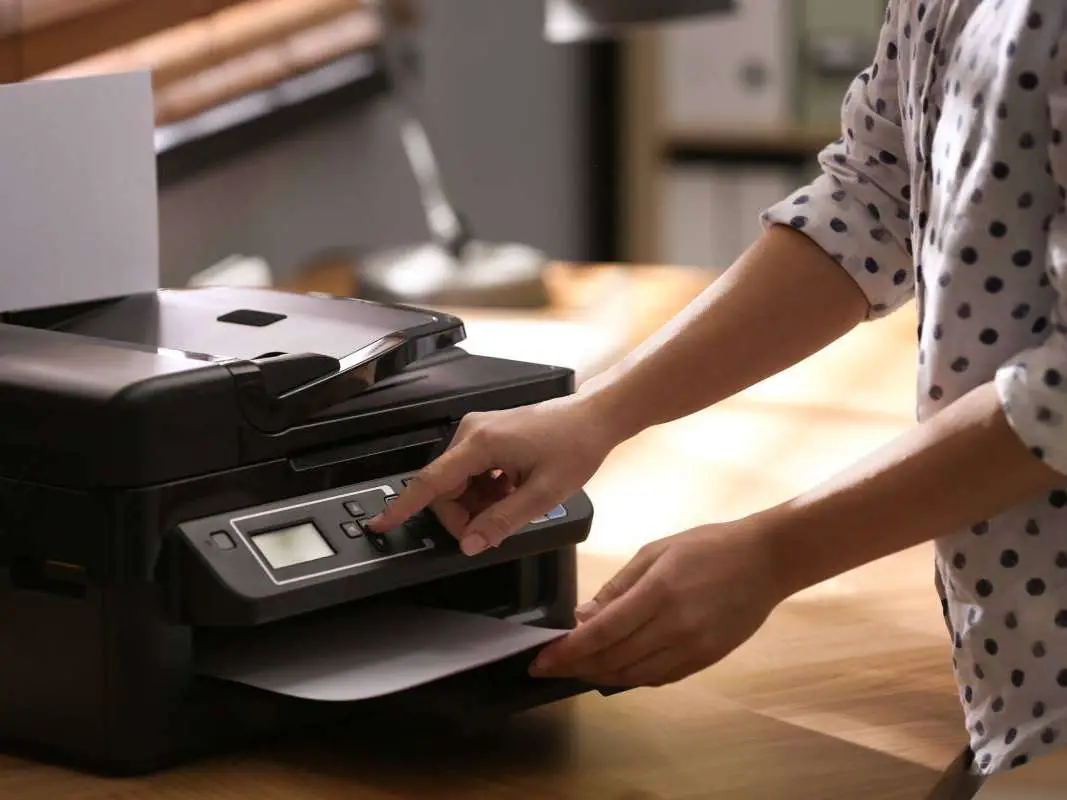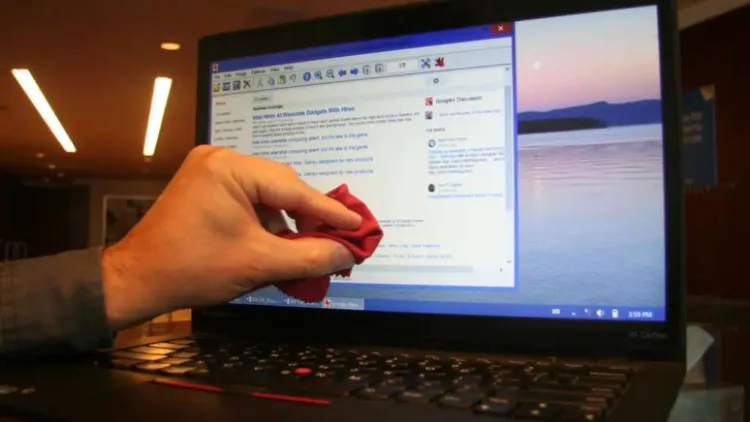Is hard drive clutter a big problem for you? Join the club.
It’s helpful to know how Disk Cleanup works on a PC — and how it can improve the speed of your computer.
Over time, my hard drive fills up with mysterious data — which really slows down my computer. And I can never seem to effectively remove it.
Windows includes a tool for this very dilemma! (I completely forgot about it, until recently.) It’s called Disk Cleanup.
So I’m going to break it down for you, and here’s what you’ll learn:
- How the Windows Disk Cleanup tool works & why you should use it.
- What to look for when choosing a different PC cleaner.
- System cleanup tips to keep your PC running smoothly all the time.
What Does Windows Disk Cleanup Do?
Disk Cleanup is a free tool that comes with every Windows computer (since Windows 98). However, it remains obscure and untouched by many of us — because most people don’t even know it’s there!
The Windows PC cleaner makes it easy to remove old and unnecessary files that clog up your hard drive space.
Windows Disk Cleanup will do these things:
- Save you time. Disk Cleanup deletes files from a variety of locations (such as cached interactive content and temporary files saved by Internet Explorer). Although you could find and delete all of these files manually, Disk Cleanup does it in a lot less time.
- Compress large files. Disk Cleanup searches your computer for files that you haven’t used for awhile and compresses them. Compressing files increases the amount of free space on your hard drive without deleting any of those files.
- Recover hard drive space. Disk Cleanup frees up hard drive space for you.
It is not uncommon for Disk Cleanup to recover hundreds–if not thousands–of megabytes of storage space. For example, Windows writes the contents of the computer’s memory to the hard drive by default if the computer crashes. This file, called a “memory dump,” is as large as the amount of RAM in your computer. If you have 2GB of RAM and your computer has ever experienced a blue screen error, running Disk Cleanup will recover at least 2GB of space. Source
How Does It Speed Up Your Hard Drive?
In a simple and user-friendly way, Windows Disk Cleanup finds data which hasn’t been (or won’t be) used for a long time… and deletes it!
This frees up valuable space — so you can save more documents and programs on your hard drive.
Often, a quick cleaning is all it takes to get your computer back to full capacity.
These are the types of files that are safe to remove with Disk Cleanup (or any other disk cleaner):
- Temporary Internet Files
- Downloaded Program Files
- Offline Webpages
- Recycle Bin Files
- Temporary Files
- Thumbnails
- Old Windows Folder
Don’t delete “Windows ESD installation files”. Deleting them could free up a few gigabytes of hard disk space, but you probably don’t want to remove them. Here’s why:
- ESD files are the ones used to reset a PC to its factory default settings.
- Deleting them will make your life harder if you ever want to use the “reset your PC” feature in the future.
- Without the ESD files, you would have to download Windows installation media in order to “reset your PC”.
How To Do A PC System Cleanup
Before you attempt the steps below, I recommend that you restart your computer to ensure that all Windows update operations are complete and make sure that you’re starting with a clean slate.
Here are the steps to run Windows Disk Cleanup:
- Open the Start Menu on your Windows PC.
- Search for “Disk Cleanup”. (The correct application should appear even before you finish typing.)
- It will ask which drive you want to clean up. Choose the C: drive — because this is most often where data is stored. (If you want another hard drive cleaned, you can simply select it from the drop-down menu.)
- Once the correct drive is selected, hit OK.
- The next screen will be a list of all items to be cleaned. Go ahead and check all items in the list — because they’re all unimportant.
After confirming, Windows will begin the process of deleting all of the junk files on your computer!
Here’s a really helpful video showing how to use Windows Disk Cleanup.
Windows Disk Cleanup is also one of the only ways to clean up error files — which are difficult to find and remove otherwise. Here’s how to do it:
Disk Cleanup is very easy to use — even tech newbies can do it!
Are There Any Disadvantages To Using Windows Disk Cleanup?
Yes — I can think of 2 small things:
- The Windows Disk Cleanup tool doesn’t address all of the data on your computer — like personal documents and photos. TIP: If you want those types of things to be cleaned up, you’ll need to look beyond Windows for other programs to do that.
- The only other danger of using a PC cleaner like Disk Cleanup to erase files on your computer is that you could (potentially) lose some files — because this disk cleaner destroys all of information associated with the files that you selected. TIP: just make sure to save all of your important files to a USB flash drive or an external hard drive, before using Windows Disk Cleanup.
Interested In Using A Different Disk Cleaner?
There are other tools available to free up hard drive space on a Windows computer — but Disk Cleanup is free and already comes loaded on your computer, so why not start there?
Here are 5 other popular disk cleaner tools:
- CCleaner (free) – Protects your privacy, makes your computer faster and more secure. (Here’s our review of CCleaner.)
- BleachBit (free) – Deletes unnecessary files to free up valuable disk space, maintain privacy, and remove junk. It will clear your system of old clutter including cache, cookies, etc.
- Glary Utilities (fee-based) – Offers lots of powerful and easy-to-use system tools and utilities to fix, speed up, maintain, and protect your PC.
- Clean Master (free) – All-in-one cleaner app on Android for cleaning app cache, unused files, residual files, search history, and uninstalling apps.
- AVG PC TuneUp (free) – Keeps your computer going for longer with more speed; the turbo mode switches off unnecessary features to release more power as needed.
Windows Disk Cleanup’s power and simplicity combine into a fantastic package which has stood the test of time — almost 25 years. While other Microsoft programs can be sub-par, Disk Cleanup is one tool that really shines.
If you haven’t tried it yet, now’s the time. I bet you’ll be surprised how much more quick and smooth your computer will seem.
Which Disk Cleaner To Use If You Have A Mac
Here’s how to use a disk cleaner to free up space and speed up your Mac:
- How To Clean Up A Bloated & Sluggish Mac
- Speed Up Your Mac Without Spending A Cent
- Video: How To Perform Disk Cleanup On A Mac
- Macworld’s Top Disk Cleanup Tips
I’m a health nut, a frugal mom, a dog lover, a DIYer, and a gadget girl. Personally, as a post-divorce, working single mom on a budget I have a lot of experiences that I enjoy sharing so others can learn from the things I wish I knew earlier! Professionally, I’ve worked full-time in a variety of marketing, sales, and editing jobs. You can always find me at the corner of Good News & Fun Times as Managing Editor at The Fun Times Guide (32 fun & helpful websites).





